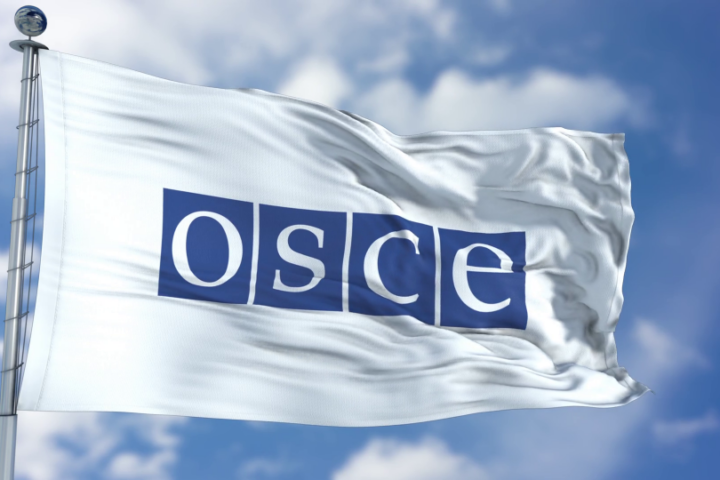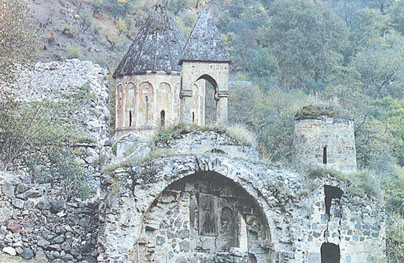1992
February 28 – 7th meeting of the CSCE Committee of Senior Officials in Prague. It called the parties to establish a cease-fire in the Nagorny Karabakh region of Azerbaijan without delay, respect inviolability of internal, as well as external borders, which can only be changed by peaceful means and with common consent, and refuse from all territorial claims, including abstinence from all the hostile propaganda;
March 24 – First additional Helsinki meeting of the CSCE Council. Decision to convene a conference on Nagorny Karabakh conflict under the auspices of the CSCE;
1993
April 6 – The President of the UN Security Council made a statement condemning the occupation of Kalbajar;
April 25-29 – The Organization of Islamic Conference adopted a resolution strongly condemning the recent Armenian offensive against Azerbaijan and the occupation of Azerbaijani territories;
April 30 – Adoption of the resolution #822 by the UN Security Council, demanding immediate withdrawal of all occupying forces from the Kelbajar and other recently occupied areas of Azerbaijan;
June 11 – The Statement of the North Atlantic Cooperation Council (NACC): “We strongly support UN SC Resolution #822, which must be implemented fully and without delay by all countries and parties to the conflict. We call for the immediate cessation of hostilities, the withdrawal of all occupying forces from the Kelbajar and other recently occupied districts of Azerbaijan”;
July 29 – Adoption of the resolution #853 of the UN Security Council, which demanded “the immediate, complete and unconditional withdrawal of occupying forces involved from the district of Agdam and other recently occupied districts of the Republic of Azerbaijan”;
August 18– The statement of the President of the UN Security Council on full, immediate and unconditional withdrawal of the occupying forces from the Agdam district and other recently occupied districts of Azerbaijan.
October 14 – Adoption of the UN Security Council Resolution #874, which called for “immediate implementation of the reciprocal and urgent steps provided for in the CSCE Minsk Group’s Adjusted timetable, including the withdrawal of forces from recently occupied territories”;
November 11 – Adoption of the UN Security Council Resolution #884, which condemned the occupation of Zangilan district and the Horadiz town, attacks on civilians and bombardments of the territory of the Republic of Azerbaijan and demanded the unilateral withdrawal of occupying forces from the Zangilan district and Horadiz, and the withdrawal of occupying forces from other recently occupied areas of the Azerbaijani Republic;
1994
January 10-11 – The Heads of State and Government of the North Atlantic Cooperation Council adopted a declaration where they “condemned the use of force for territorial gains. Respect for the territorial integrity, independence and sovereignty of Armenia, Azerbaijan and Georgia is essential to the establishment of peace, stability and cooperation in the region…”
April 15 – CIS Declaration on respect to the sovereignty, territorial integrity and inviolability of borders of the participating states of the CIS. Armenia was the only CIS country, who did not join the declaration;
May 12 – Agreement on cease-fire entered into force;
June 9-10 – The Ministerial Meeting of the North Atlantic Council adopted a declaration where the ministers “agreed that implementation of an effective cease-fire and constructive negotiations in a spirit of compromise are essential to create the conditions necessary for a step-by-step peace process leading to a permanent solution, including the de-escalation of the conflict and the withdrawal of forces from areas occupied by force and the return of displaced persons to their homes in accordance with the relevant UN Security Council resolutions…”;
December 5-6 – The CSCE Budapest Summit. A decision on “Intensification of CSCE action in relation to the Nagorny Karabakh conflict” was adopted. In accordance with this document the institute of Co-Chairs of the Minsk Conference was established “to conduct speedy negotiations for the conclusion of a political agreement on cessation of the armed conflict, the implementation of which, will eliminate major consequences of the conflict for all parties and permit the convening of the Minsk Conference”. Thereby, the Budapest Summit adopted a two-stage legal framework of the settlement process:
1) first stage – elimination of consequences of the armed conflict by implementation of the agreement, i.e., full liberation of all occupied territories and ensuring return of IDPs to their homes;
2) second stage – convening Minsk Conference for final, comprehensive settlement of the conflict. The Budapest Summit also adopted a decision to establish an OSCE peacekeeping operation after the conclusion of the political agreement;
1995
Conducting the negotiations on elaboration of the agreement on cessation of the conflict.
1996
December 2-3 – The OSCE Lisbon Summit. The OSCE Chairman-in-Office has made a statement supported by all (53) OSCE member states except Armenia, on three principles for the settlement of the conflict between Armenia and Azerbaijan: 1) territorial integrity of the Republic of Armenia and the Azerbaijan Republic; 2) legal status of Nagorny Karabakh defined in an agreement based on self-determination which confers on Nagorny Karabakh the highest degree of self-rule within Azerbaijan; 3) guaranteed security for Nagorny Karabakh and its whole population, including mutual obligations to ensure compliance by all the parties with the provisions of the settlement;
1997
April 22 – Parliamentary Assembly of the Council of Europe adopted a Resolution (1119) on the conflicts in Transcaucasus, where it stressed the settlement of the conflicts in the region has to be on the basis of the principles set out in the 1975 Helsinki Final Act and the 1990 Paris Charter:
I. inviolability of borders;
II. guaranteed security for all peoples in the areas concerned, particularly through multinational peacekeeping forces;
III. extensive autonomy status for Abkhazia and Nagorny Karabakh to be negotiated by all the parties concerned;
IV.right of return of refugees and displaced persons and their reintegration respecting human rights.
June 1– The Co-chairmen introduced a “package plan” for the settlement of the conflict. The basic idea behind the proposal was to work in parallel negotiations on two core issues of the confrontation: withdrawal of the armed forces from occupied regions and elaboration of the status of Nagorny Karabakh. Unlike Armenia, who refused this plan, Azerbaijan accepted the proposal with some exceptions;
September 19 – The Co-chairmen introduced “step-by-step” settlement plan. This plan envisaged two-staged conflict settlement according to the following scheme: On the first stage – withdrawal of occupying armed forces from six districts, which are outside of the former NKAO (except Lachin district), return of civilian population and restoration of the main communication links in the conflict area; on the second stage – definition of the status of the Nagorny Karabakh as well as of Lachin and Shusha;
1998
November 9 – The Co-chairmen brought forward a new plan for the settlement, called a “common state”. Azerbaijani side refused to accept this proposal as a basis for the negotiations because of its inconsistence with the norms and principles of international law as well as the national legislation. Azerbaijan confirmed its readiness to resume negotiations within the OSCE Minsk Group framework, on the basis of the previous proposal of the co-chairmen, on the step-by-step settlement plan;
1999-2002
Direct talks between the Presidents of Azerbaijan and Armenia. They met more than 20 times. No results have been achieved so far.
2002
July 12 – In the final document of the EU-Azerbaijan Cooperation Committee, the EU reaffirmed its support to the territorial integrity of Azerbaijan as the basis for the peaceful solution of the conflict;
August 2 – The EU condemned holding of the so-called “presidential elections” in Nagorny Karabakh region of the Republic of Azerbaijan.
2003
December 11 – The first meeting of the President of Azerbaijan Mr. I.Aliyev with his Armenian counterpart in Geneva.
2004
October 29 – Acting on the recommendation of its General Committee, the UN General Assembly decided to include an additional item on its current agenda entitled “The situation in the occupied territories of Azerbaijan”. It took that decision by a recorded vote of 43 in favour to 1 against (Armenia) with 99 abstentions.
2005
January 25 – In accordance of the Report by Mr. D.Atkinson Parliamentary Assembly of the Council of Europe adopted the Resolution (1416) on the conflict over the Nagorny Karabakh region dealt with by the OSCE Minsk Conference.
February 25 – The report of the OSCE Minsk Group Fact-Finding Mission to the Occupied Territories of Azerbaijan was signed by the head of the Mission Mrs. Emily Huber.
Source: Ministry of Foreign Affairs
http://www.azerbaijan.az/_Karabakh/_ArmenianAgression/_armenianAgression_e.html





